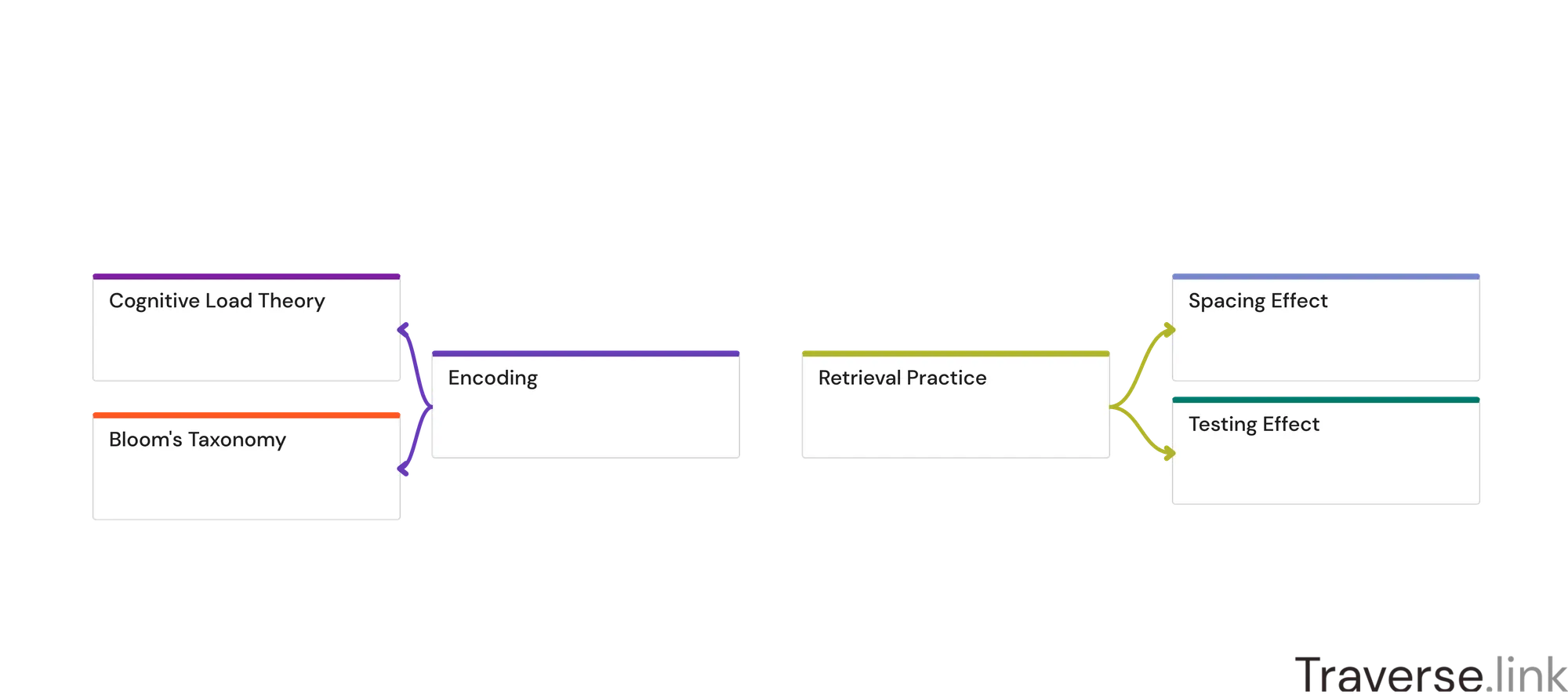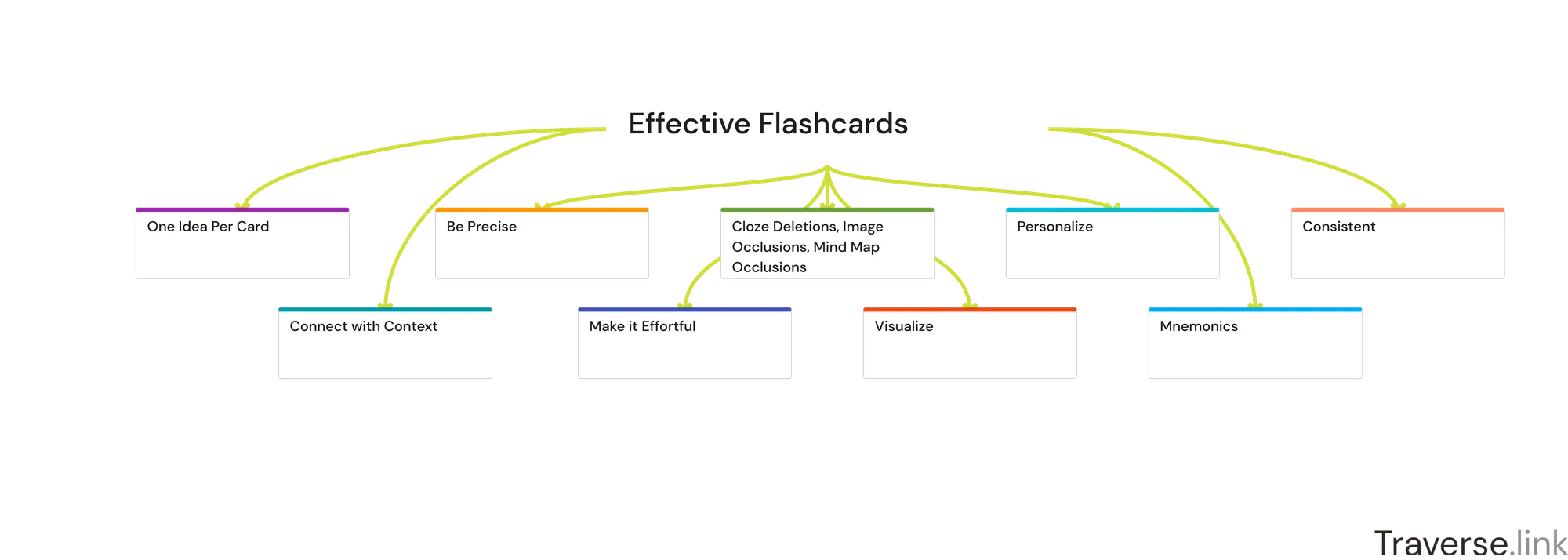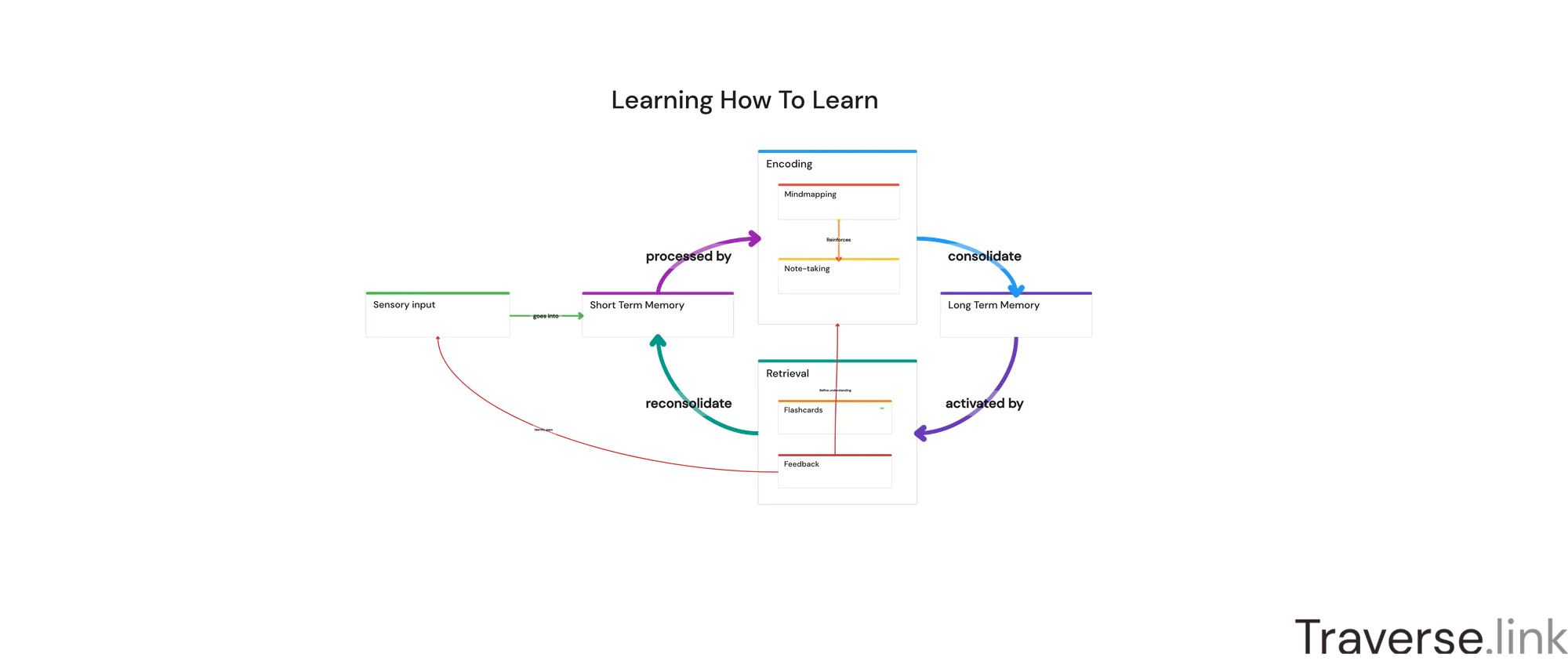There is often a considerable delay between scientific discoveries and their practical application. The improvement of learning strategies is not different, which is why Traverse exists. And in this article, we will dive into the primary scientific findings and illustrate how they are utilized within the app.
To fully understand how Traverse works, I want to introduce you to the very helpful basics of learning science:
The Science of Learning
The Learning Process in your Brain
Here are the 5 steps your brain undergoes when learning:
- Information intake
You may read a textbook or research paper, watch a video, or attend a lecture. This information enters your short-term or working memory (STM). 99% of information is quickly discarded and forgotten, which is beneficial (you don't need to remember the color of your professor's socks on May 13th last year). In fact, our STM can only hold 7 items at once.
- Encoding
The information we want to remember must be encoded. Encoding involves making information more meaningful so you store it in your long-term memory (LTM). Humans are both curious and sense-making creatures: only mental representations that follow a certain logic and are considered interesting can be successfully stored in LTM.
- Consolidation
Consolidation is the process of transferring mental representations into long-term memory. Your brain reviews the lesson and fills in any gaps. It then finds an appropriate place to store the information in LTM by linking it to your existing knowledge and experiences. This process takes hours or days and occurs during breaks and sleep.
- Retrieval
The purpose of learning is to apply what you've learned, whether in an exam or in your job. Similar to habit-forming, you establish cues to retrieve the information, refining its connections to your existing knowledge. The better your cues, the better you can recall the information and apply it in different situations when needed.
- Reconsolidation
Each time you retrieve information, it is reconsolidated - again, the information and connections in your long term memory get stronger. If you retrieve information in various contexts, you will create many connections - if you always retrieve it in the same way, other potential connections are weakened. This ultimately determines your ability to process information in different contexts.

4 Principles of Effective Learning
Based on the learning process above, we can identify four core principles that help explain why certain learning techniques are effective and others are not. These principles will recur as we discuss specific techniques.
- Effective encoding distinguishes between remembering and forgetting
Few people take care of encoding as they should, perhaps because it is so challenging: Proper encoding turns information into meaningful mental representations, building a strong memory cue. Without effective encoding, your brain turns information into isolated facts - and isolated facts fade away.
This begs the question: How do we encode information effectively?
A short answer to this question is: good encoding = higher-order thinking.
In order for your learning to improve, you have to make a crucial distinction between higher-order thinking and lower-order thinking. The graphic below displays the findings of scientist Benjamin Bloom who discovered that creating is the highest-order thinking faculty, while remembering is the lowest:
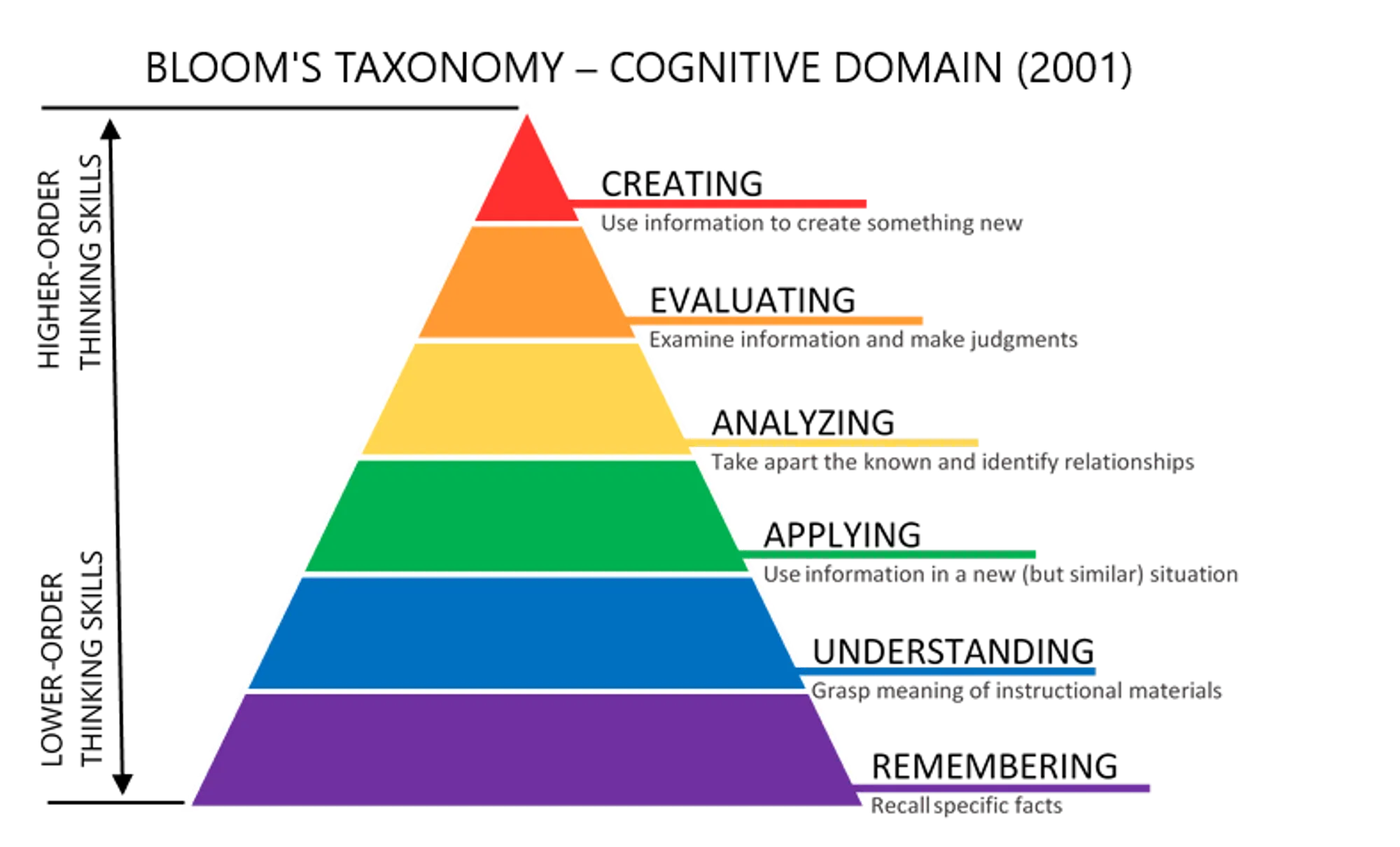
Focusing on lower-order thinking skills, such as remembering and understanding, leads to poor encoding and thus poor retention of new knowledge. (Perhaps you can see now why you have trouble remembering lots of stuff you learned in high school?)
Bloom's taxonomy recommends concentrating on higher-order thinking skills like analyzing, evaluating, and creating. Don’t worry, though: your brain will automatically fill in the lower orders.
- Deep processing makes the difference between comprehension and ignorance
Deep processing is closely related to encoding. While encoding occurs early in the learning process and helps build strong long-term memory structures, deep processing takes place later, during the retrieval and reconsolidation phases.
This process involves retrieving newly learned knowledge, applying it in new contexts, and restoring it in long-term memory with stronger connections. While encoding builds strong memory, while deep processing builds strong comprehension.
To practice deep processing, we follow the SOLO taxonomy, which is related to Bloom's taxonomy.
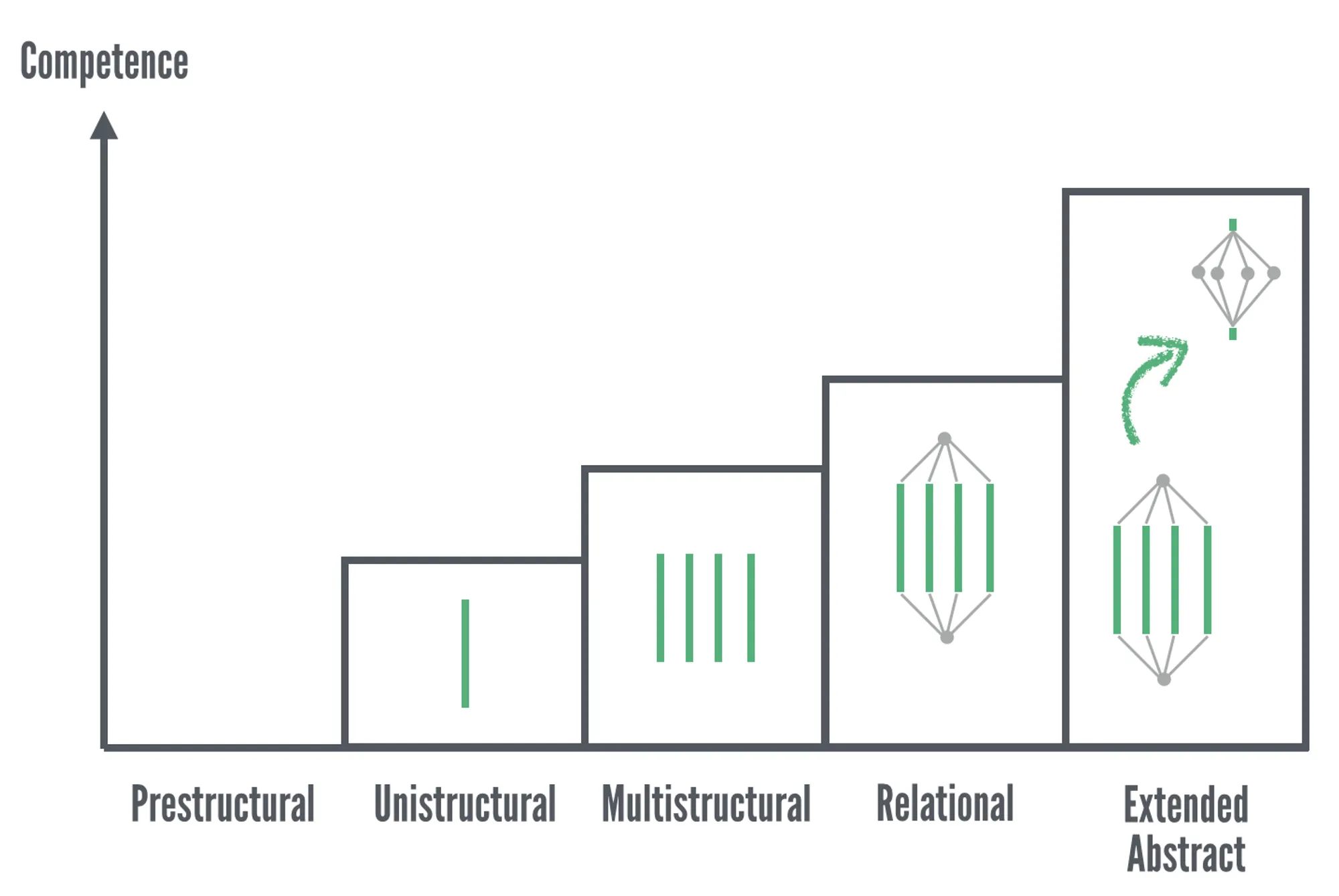
Okay, so what the heck does all of that mean?
The definition of prestructural knowledge is barely knowing anything of the subject.
Secondly, unistructural means learning in isolation.
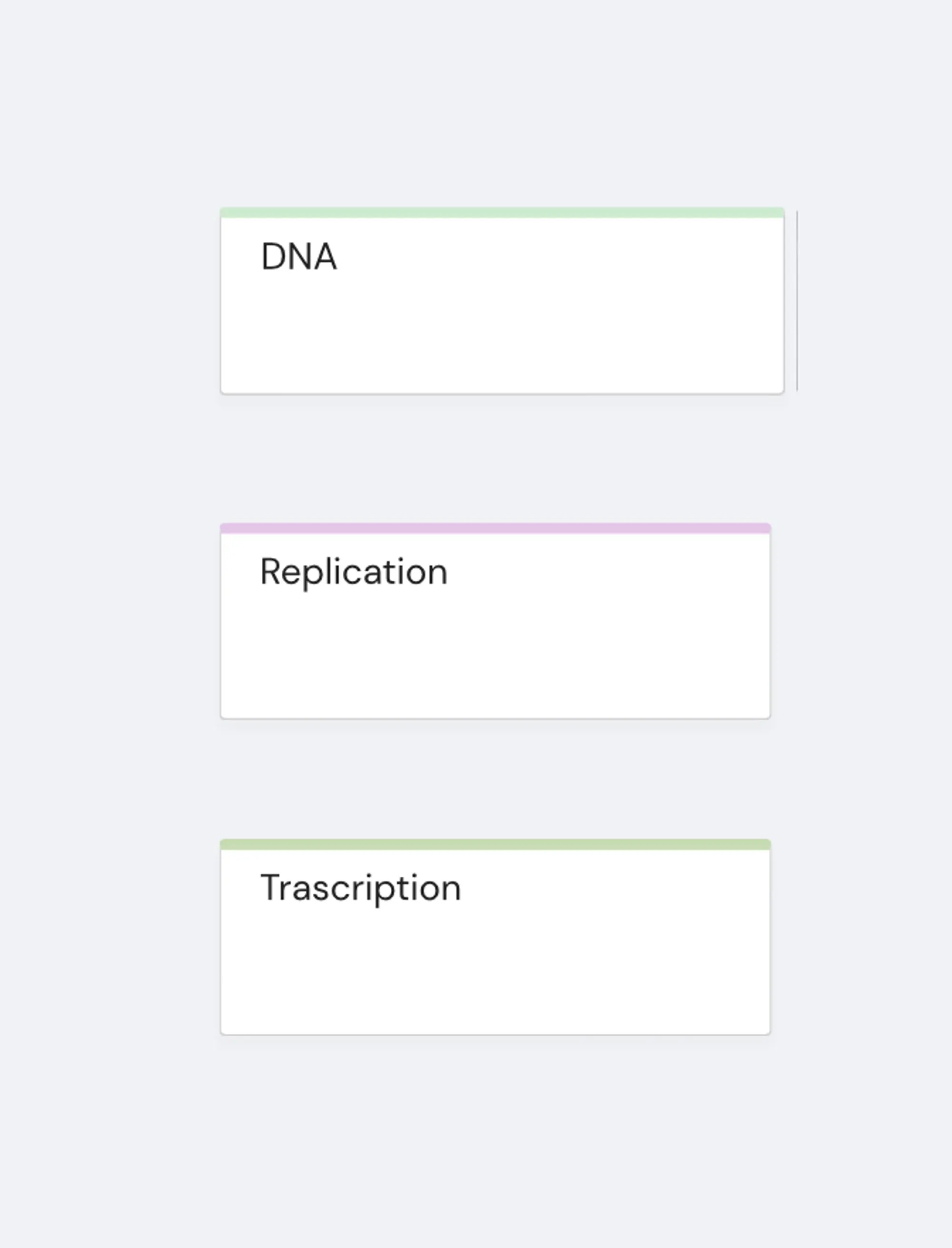
Multstructural learning happens when you group information together.
If you then focus on the connections within the group, your learning becomes relational, and finally:
The extended abstract comes from thinking in systems and building mental models.
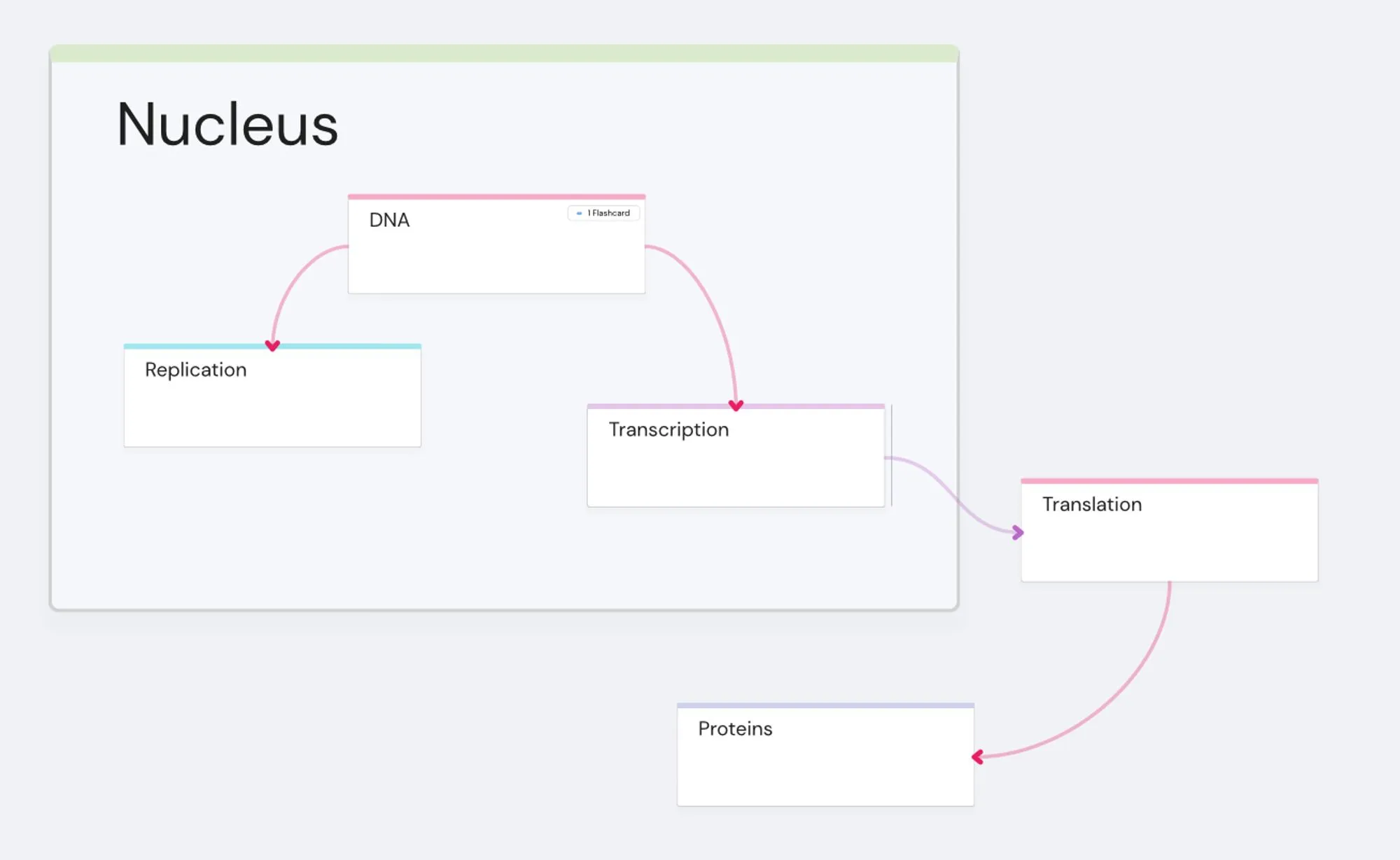
These activities are taxing for the untrained brain. Science would say: these activities have a high cognitive load, which is great as learning increases if it’s challenging.
- Learning is a flywheel
Higher-order thinking requires effort, especially at the beginning, and it takes time for the effects to manifest in your learning.
It is a short-term investment that yields long-term rewards, delaying gratification and exponentially increasing your learning capacity. As you encode and deeply process one topic, it provides entry points for attaching new information from another topic, making encoding and deep processing easier with the next topic.
Conversely, if you continue learning shallowly, you will never build a strong foundation, setting yourself up for long-term failure.
- Boredom and fatigue hinder successful learning
Many common learning activities, like extensive note-taking and continuous flashcard reviewing, are popular because they are easy to explain and execute. However, they quickly become boring, as they operate at low levels of thinking. As you might have noticed, this way of studying is not only ineffective, but also unstimulating.
Higher-order thinking involves variation, discovery, and challenges. It can be enjoyable, allowing you to jump from one AHA moment to another, exploring your natural curiosity. Learning actually is a highly creative process: You’ll jump from one AHA moment to another, exploring your natural curiosity.
And when you get tired, you give your brain a break, so it can process and consolidate all the information.
Now that you’ve got the fundamentals covered, you might be wondering: How does Traverse implement all of this?
How Traverse Utilizes Cognitive Science
Most study apps fall into one of three categories:
- Flashcard apps These apps help you review material, often featuring spaced repetition and active recall, which are effective retrieval practices.
- Note-taking apps Used for taking notes in class, from textbooks, or online courses, these apps have gained popularity since Roam Research introduced the concept of connected notes, making it easier to link notes across different topics.
- Mind mapping apps Introduced by Tony Buzan in 1974, mind mapping has been proven to be a great way to understand new material and build deep comprehension. However, its popularity among students has been limited to top academic performers.
These categories align with the learning process mentioned above. During the initial learning stage, the brain needs to make logical sense of new information and connect it to existing knowledge (encoding). Otherwise, you end up with isolated facts that won't stick.
After the information is initially learned, students review it to improve retention. This process, called 'Retrieval practice,' involves techniques like active recall and spaced repetition, which is where flashcard apps excel.
Note-taking apps can be useful at both stages. When making connections between notes, they can assist the encoding process. Notes can even serve as a retrieval practice later on. However, note-taking isn't ideal for either job: it's easy to fall into the trap of taking notes that merely restate what a lecturer said, leading to poor encoding. Also, reviewing notes is often a passive activity of re-reading: They serve best as a complementary practice to mind mapping and flashcards.
Here’s where Traverse comes into play. It’s the first app that covers the complete learning process in one platform, eliminating the need to switch between apps, making it easier to build an effective study process. Traverse helps you build initial understanding by forming chunks and connections, diving deeper into your knowledge tree, and remembering for life with active recall and spaced repetition.

A powerful example of how combining flashcards with mind mapping can yield superior learning outcomes is the Pictorial Superiority Effect, which shows that visual information is remembered significantly better than textual information. With Traverse, any flashcard can be turned into visual information, by actively recalling part of your mind map:

Supporting Studies and Research
- Report on Learning: A Practical and Learner-Centric Perspective by Sung · 2022
- The Relation Between Students’ Effort and Monitoring Judgments During Learning: A Meta-analysis by Baars et al · 2020
- Learning How to Learn by Oakley · 2018
- Problem of Schooling by Wozniak · 2017
- The multi-store model of memory by Atkinson and Shiffrin · 1968
- The magical number seven, plus or minus two: Some limits on our capacity for processing information by Miller · 1956
- Make it Stick by Roediger & McDaniel · 2014
- Rethinking the Use of Tests: A Meta-Analysis of Practice Testing by Adesope et al. · 2017
- Impact of reducing intrinsic cognitive load on learning in a mathematical domain by Ayres · 2006
- Learning as a generative process by Wittrock · 2010
- A Systematic Review of Higher-Order Thinking by Visualizing its Structure Through HistCite and CiteSpace Software by Liu et al · 2021
- Dialogue Mapping: Building Shared Understanding of Wicked Problems by Conklin · 2005
- Human problem solving by Newell & Simon · 1972
- Cognitive Architecture and Instructional Design: 20 Years Later by Sweller · 2016
- Perceiving effort as poor learning: The misinterpreted-effort hypothesis of how experienced effort and perceived learning relate to study strategy choice by Kirk-Johnson · 2019
- How and when do students use flashcards? by Wissman · 2012
- Everyday lessons from the science of learning by Lang · 2016
- Effects of self-explanation as a metacognitive strategy for solving mathematical word problems by Bielaczyc et al · 1995
- The Dunning–Kruger Effect: On Being Ignorant of One's Own Ignorance by Dunning · 2011
- A Meta-Analytic Review of the Benefit of Spacing out Retrieval Practice Episodes on Retention by Latimier · 2021
- Use Your Head by Buzan · 1974
- Chunks in expert memory: evidence for the magical number four ... or is it two? by Gobet & Clarkson · 2004
- Development of Theory of Mind and Executive Control. Trends in Cognitive Sciences by Lang et al · 1999
- Moonwalking with Einstein by Foer · 2011
- Über das Gedächtnis by Ebbinghaus · 1885
- Measurement of Cognitive Load in Instructional Research by Paas & Van Merriënboer · 1994
- The effects of interleaved practice by Taylor & Rohrer · 2009
- How to Take Smart Notes by Ahrens · 2017
- Learning how to use a computer-based concept-mapping tool: Self-explaining examples helps by Hilbert & Renkl · 2009
- Traditional and Inquiry-Based Learning Pedagogy by Khalaf · 2018
- Using elaborative interrogation by B Kahl · 1994
- Mind Mapping in Learning Models: A Tool to Improve Student Metacognitive Skills by Dyah Astriani · 2020
- The effect of mind-mapping applications on upper primary students’ success and inquiry-learning skills in science and environment education by Ali Günay Balım · 2013
- The Effect of Concept Mapping to Enhance Text Comprehension and Summarization by Chang · 2002
- The Random-Map Technique: Enhancing Mind-Mapping with a Conceptual Combination Technique to Foster Creative Potential by Charlotte P. Malycha · 2017
- Distributing Learning Over Time by HA Vlach · 2012
- Test-Enhanced Learning by Roediger & Karpicke · 2006
- Improving Students’ Learning With Effective Learning Techniques by Dunlosky · 2013
- How to become a Straight-A Student by Newport · 2006
- Experiential Learning: Experience as the Source of Learning and Development by Kolb · 2002
- Cognitive skill acquisition by VanLehn · 1996
- Atomic Habits by James Clear · 2018
- How to Read a Book by Adler · 1940
- Augmenting Long-term Memory by Nielsen · 2018
- How to Create A Memory Palace by Metivier · 2022
- How to write good prompts: using spaced repetition to create understanding by Matuschak · 2020
- The picture superiority effect in recognition memory: A developmental study using the response signal procedure by Defeyter · 2009
Read More
Resources
